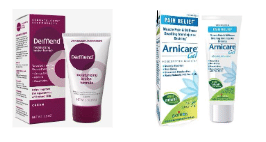Solar Purpura
Also known as “traumatic or Bateman’s pupura,” solar purpura is a common skin condition among the elderly and older adults. Patients classically present with multiple areas of discoloration, primarily over the forearms and dorsal hands. The skin is so fragile and easily damaged that individuals often fail to even remember the incident that caused the damage. Further, unlike other bruises, these “skin bruises” usually don’t hurt and are essentially asymptomatic.
Causes
Solar purpura is primarily attributed to skin damage caused by years of sun exposure. Ultraviolet light (UV) can damage the skin’s connective tissue, making the skin thin and less elastic. When this happens, small blood vessels under the skin easily tear, causing areas of bruising. This process is often magnified or compounded by patients on blood-thinning medications such as aspirin, NSAIDs, and anticoagulants (Warfarin, Xarelto, Eliquis, etc).
Treatment
Although many patients with the solar purpura are concerned about the cosmetic appearance of the skin, it is important to note that the condition is ultimately harmless. Solar purpura is NOT associated with cancer and will not lead to significant health issues or complications.
Most of the damage from solar purpura resolves without treatment within two-to-three weeks, but yellowed areas may persist for months even after the blood is reabsorbed and the blue/purple areas begin to fade. Treatment is somewhat limited, but laser procedures and cosmetic creams, such as DerMend Bruise Formula or arnica gel, often hasten recovery and improve the overall appearance of your skin.
Moisturizing creams or lotions may improve elasticity and lessen further damage. It’s also important to protect the skin from further sun damage by applying a broad-spectrum sunscreen with an SPF of 30 or higher any time you are outdoors and avoiding indoor tanning beds and lamps. Covering the arms and legs with tight weave long sleeves and pants offers further protection. Speak with your dermatologist about the available treatment options to determine the ideal treatment plan for you.

